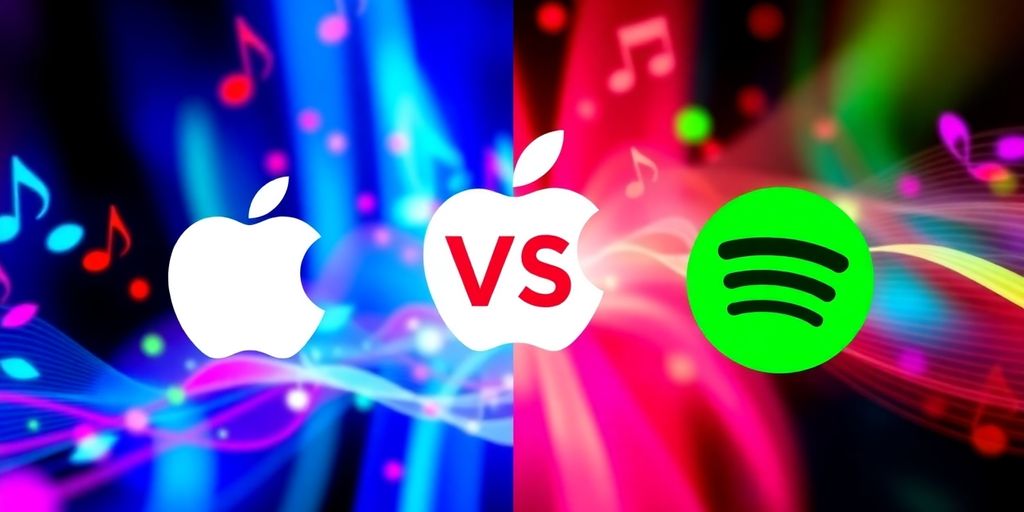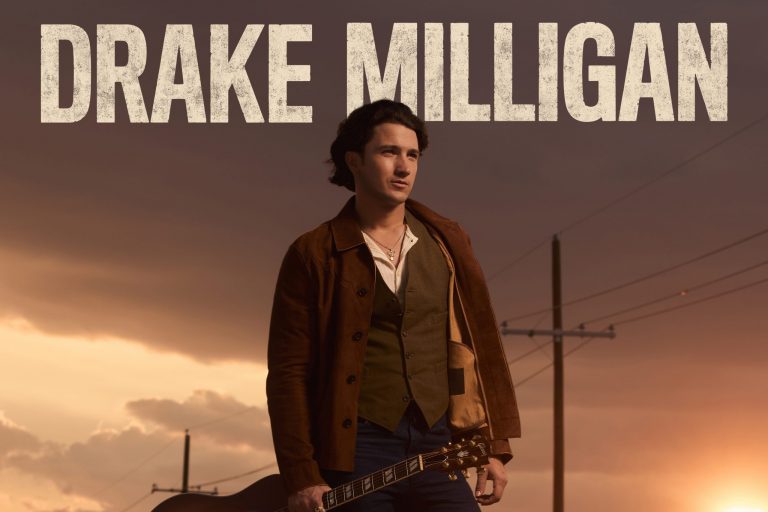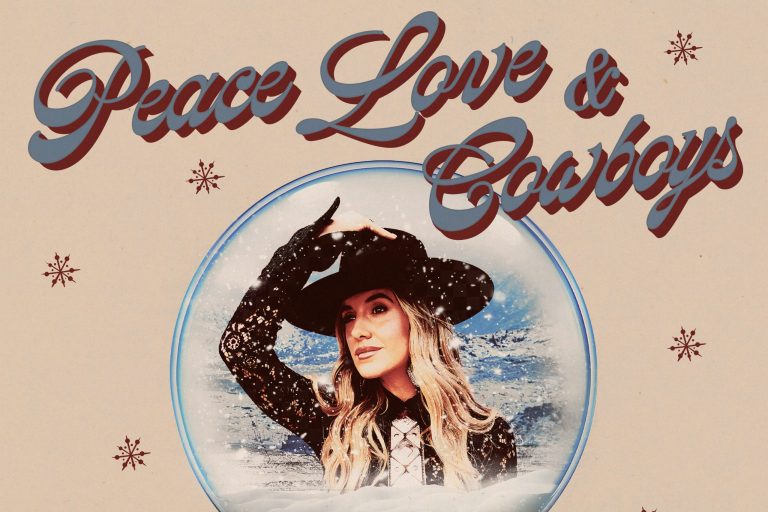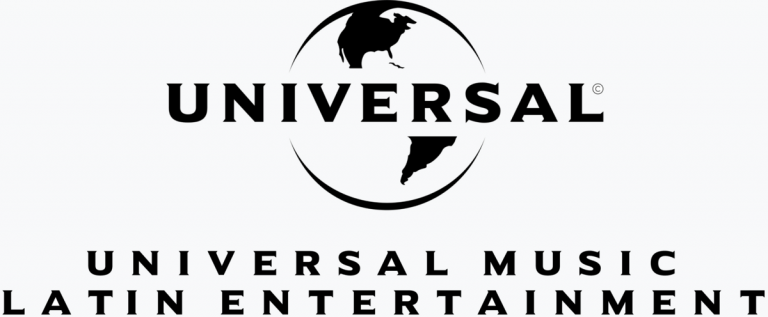
In the ever-evolving world of music streaming, the rivalry between Apple Music and Spotify continues to be a hot topic among fans. Both platforms have their own strengths and weaknesses, catering to different preferences and needs. As we step into 2025, it’s important to take a closer look at what each service offers, from sound quality to exclusive content, to help you decide which one is best for you.
Key Takeaways
- Apple Music provides higher sound quality with lossless audio options, appealing to serious music fans.
- Spotify shines in social features, allowing easy sharing and collaboration through playlists.
- Both services offer competitive pricing, including family and student plans, along with promotional free trials.
- Device compatibility is strong on both sides, but Spotify has broader integration with third-party devices.
- Offline listening is available on both platforms, so you can enjoy music without an internet connection.
Sound Quality and Streaming Options
Audio Quality Comparison
Okay, let’s get into the nitty-gritty of sound. Apple Music has really stepped up its game, especially with lossless audio. This is a big deal for anyone who cares about hearing music the way the artist intended. Spotify, on the other hand, still streams at a lower bitrate. Some people might not notice the difference, but if you’ve got good headphones or a decent sound system, you probably will. It really comes down to how picky you are about audio quality. If you’re an audiophile, Apple Music is the clear winner right now.
Streaming Formats Available
Let’s break down the tech stuff. Apple Music uses ALAC (Apple Lossless Audio Codec) for its lossless audio, and AAC for standard streaming. Spotify uses Ogg Vorbis. Unless you’re super into audio codecs, those names probably don’t mean a whole lot. The main thing to remember is that Apple Music gives you that lossless option. There’s been talk about Spotify HiFi for ages, but who knows if it’ll ever actually happen? Here’s a quick look at the formats:
- Apple Music: ALAC, AAC
- Spotify: Ogg Vorbis
- Tidal HiFi Plus: AAC, ALAC, FLAC, MQA
Offline Listening Capabilities
Both Apple Music and Spotify let you download music for offline listening, which is great for when you’re on a plane or in an area with bad cell service. The process is pretty similar on both platforms: you just find the song, album, or playlist you want, and hit the download button. One thing to keep in mind is that the amount of storage space these downloads take up can vary depending on the audio quality. Lossless files from Apple Music are going to be bigger than Spotify’s Ogg Vorbis files, so if you’re tight on storage, that’s something to consider.
Choosing a streaming service can be tough. It really depends on what you value most. If sound quality is your top priority, Apple Music has a clear edge right now. But if you’re happy with ‘good enough’ and prefer Spotify’s other features, then maybe it’s not a deal-breaker.
Personalization and Discovery Features

Curated Playlists and Recommendations
Both Apple Music and Spotify put a lot of effort into figuring out what you like. Apple Music has its "For You" section, which is all about personalized playlists and album suggestions based on what you’ve been listening to. Spotify counters with "Discover Weekly" and "Release Radar," which get updated all the time with new music tailored to your taste. It’s a constant battle to see who can guess your next favorite song. I think it’s pretty cool how they try, even if they don’t always nail it. It’s like having a friend who’s really into music trying to make you a mixtape, sometimes they get it spot on, other times it’s a swing and a miss. But hey, at least they’re trying, right?
Algorithmic Music Discovery
Spotify’s algorithm is often praised for its accuracy, and it’s true, it’s pretty good at suggesting music you might actually like. But Apple Music has been catching up, especially with its curated radio stations and personalized artist pages. It’s interesting to see how these algorithms evolve over time. I remember when they were terrible, just throwing random stuff at you. Now, they’re actually pretty decent at finding hidden gems. It makes you wonder what they’ll be able to do in another few years. Will they know us better than we know ourselves? I’m not sure if that’s a good thing or a bad thing, to be honest.
User-Created Playlists
Both platforms let you create your own playlists and share them with friends, which is a nice touch. I love making playlists for different moods or activities. It’s like creating a soundtrack for your life. And being able to share them with friends is great, because you can discover new music that way too. It’s a win-win. Plus, there’s something really satisfying about crafting the perfect playlist, you know? It’s like a little work of art. I’ve spent hours tweaking playlists, making sure the songs flow together just right. Am I the only one who does that? I hope not.
I think the ability to create and share playlists is one of the best features of these streaming services. It’s a great way to connect with friends and discover new music. Plus, it’s just plain fun to curate your own musical world.
Device Compatibility and Integration
Cross-Platform Functionality
Both Apple Music and Spotify aim for broad device support, but there are differences. Apple Music integrates tightly within the Apple ecosystem, while Spotify works well across different operating systems. Cross-platform functionality is a key feature for users who switch between devices.
While both platforms let you start listening on one device and pick up where you left off on another, the smoothness of this transition can vary. Apple Music generally provides a more seamless experience within its own ecosystem. Spotify’s Connect feature works well across different operating systems. Some users have reported occasional glitches with cross-platform playback on both services, so your experience may vary.
Smart Home Device Integration
Smart home integration is becoming increasingly important, and both Apple Music and Spotify are working to improve their compatibility with smart home devices. Apple Music integrates seamlessly with Apple’s HomePod and HomeKit ecosystem, allowing you to control playback with Siri voice commands. Spotify also works with voice assistants like Amazon Alexa and Google Assistant, enabling you to control music playback on a variety of smart speakers and displays. The level of integration can vary depending on the specific device and platform, so it’s worth checking compatibility before committing to a particular service. For example, Apple HomePod integration is a big plus for Apple users.
Ultimately, the best choice depends on your existing devices and your preferred smart home ecosystem. If you’re heavily invested in Apple products, Apple Music may offer a more seamless experience. If you use a mix of devices from different manufacturers, Spotify’s wider compatibility may be a better fit.
Mobile and Desktop Experience
Both Apple Music and Spotify offer apps for mobile and desktop. Spotify has a slight edge in its availability on a wider range of devices, including Windows PCs, Android phones and tablets, and even gaming consoles like PlayStation and Xbox. Both services are available on smart speakers such as Amazon Echo and Google Nest. The choice here depends on the devices you use most often.
Here’s a quick comparison:
- Apple Music:
- Pros: Tight integration with Apple HomePod and iOS devices.
- Cons: Limited integration outside of iOS.
- Spotify:
- Pros: Broader device compatibility.
- Cons: Occasional glitches with cross-platform playback.
Exclusive Content and Features
Artist Exclusives and Releases
Apple Music and Spotify both try to get you hooked with stuff you can’t find anywhere else, but they go about it in different ways. Apple Music often focuses on snagging exclusive album releases or early access to tracks from big-name artists. Think of it as getting a VIP pass to new music before your friends do. Spotify, while also dabbling in exclusives, seems to be shifting towards other types of unique content. It’s a constant game of who can offer the most tempting carrot to lure in subscribers.
Podcasts and Original Programming
Both platforms are heavily invested in podcasts, but their strategies differ. Spotify has gone all-in, acquiring podcast networks and personalities to create a vast library of original shows. They’re basically trying to be the Netflix of podcasts. Apple Music, while offering a podcast app, integrates podcasts less directly into its music streaming service. It feels more like an add-on than a core feature. Spotify is also experimenting with other audio formats, like audiobooks, though the experience isn’t always perfect. Finding a nonaudiobook option can be tricky.
Live Events and Concerts
Live events are becoming a bigger deal for both platforms. Spotify has been known to host virtual concerts and listening parties, giving fans a chance to connect with artists in new ways. Apple Music has also been experimenting with live streaming concerts, often tying them into album releases or special events. The pandemic accelerated this trend, and it looks like it’s here to stay. Imagine watching your favorite band perform live from the comfort of your couch – that’s the kind of experience these platforms are aiming for. For example, Apple Music’s appeal to audiophiles is growing.
It’s worth noting that exclusive content can be a double-edged sword. While it can attract new subscribers, it can also frustrate users who prefer a more open and universal music library. The key is finding a balance between offering unique content and ensuring a comprehensive selection of music that appeals to a broad audience.
Pricing and Subscription Plans

Monthly Subscription Costs
Okay, let’s talk money. How much are you actually going to pay each month? This is where things get interesting because both Apple Music and Spotify have been tweaking their prices. Generally, expect to pay around $11 to $13 for an individual plan. But it’s worth checking their websites directly, as prices can shift, and sometimes there are regional differences. For example, you might find that Spotify’s individual subscription is a dollar or two more than Apple Music’s, or vice versa. Keep an eye out for introductory offers too!
Family and Student Plans
If you’ve got a family of music lovers or you’re a student, you’re in luck. Both services offer discounted plans. Family plans usually let up to six people in your household have their own accounts under one subscription. Student plans are, of course, for students and often require verification. These can save you a good chunk of change each month. Here’s a rough idea of what you might expect:
| Plan | Approximate Cost |
|---|---|
| Individual | $11 – $13 |
| Family | $17 – $20 |
| Student | $5 – $6 |
Free Trials and Promotions
Before you commit, see if you can snag a free trial! Both Apple Music and Spotify frequently offer free trial periods, usually around 30 days. This gives you a chance to kick the tires and see which service you like better without spending any money. Also, keep an eye out for promotions. Sometimes, companies bundle music subscriptions with other products or services, like mobile phone plans or internet packages. These promotional offers can be a great way to save money in the long run.
Choosing the right plan really depends on your individual needs and circumstances. Think about how many people in your household will be using the service, whether you qualify for a student discount, and whether you can take advantage of any free trials or promotions. A little bit of research can save you a lot of money over time.
User Interface and Experience
Design and Navigation
Okay, let’s be real, nobody wants a music app that looks like it was designed in the early 2000s. Both Apple Music and Spotify have had their share of UI tweaks over the years, but where do they stand in 2025? Spotify generally gets points for a cleaner, more intuitive design. It’s easy to find what you’re looking for, whether it’s a specific song, a playlist, or a new artist. Apple Music, on the other hand, can sometimes feel a bit cluttered, with more options crammed onto the screen. It’s not bad, but it can take a little longer to get used to.
Accessibility Features
Accessibility is a big deal, and it’s awesome to see both platforms stepping up their game. Here’s a quick rundown:
- Voice Control: Both offer solid voice control integration, letting you play music, skip tracks, and adjust volume hands-free. This is a game-changer if you’re driving, cooking, or just feeling lazy.
- Screen Reader Compatibility: Both are designed to work well with screen readers, making them usable for visually impaired users.
- Customizable Text Sizes: The ability to adjust text sizes is crucial for many users, and both platforms provide this option.
It’s worth noting that accessibility features are constantly evolving, so it’s always a good idea to check the latest updates from both Apple and Spotify to see what’s new and improved. They’re both putting in the work, which is great to see.
Community and Support
When things go wrong (and let’s face it, they sometimes do), you want to know there’s someone to turn to. Both Apple Music and Spotify offer support through various channels, but the community aspect is where they differ a bit. Spotify has a more active community forum where users can share tips, troubleshoot problems, and suggest new features. Apple Music’s support tends to be more direct, with options for contacting customer service via phone, email, or chat. Which is better? It really depends on your preference. Some people like the DIY approach of a community forum, while others prefer the personalized touch of direct support.
Social Features and Sharing Options
Collaborative Playlists
Both Apple Music and Spotify let you create playlists with friends, but they do it a little differently. Spotify’s collaborative playlists are easier to set up. You just flip a switch, and anyone with the link can add, remove, and rearrange songs. It’s great for parties or road trips. Apple Music also has collaborative playlists, but you have to invite people specifically, which takes a bit more time. For example, if you’re planning a party, using Spotify collaborative playlists is a no-brainer.
Social Media Integration
If you like to show off what you’re listening to, social media integration is important. Spotify connects easily to Facebook, Instagram, and other platforms. You can share songs, albums, and playlists directly to your stories or feed. Apple Music lets you share songs too, but it’s not as smooth. If you’re all about sharing your music tastes, Spotify is better.
Community Engagement
Both platforms are trying to build a sense of community, but they approach it differently. Spotify has public playlists and profiles, so you can see what other people are listening to. Apple Music focuses more on artist pages and curated content. It’s interesting to see how both are trying to build community.
It seems like Spotify has a slight edge in social sharing. Its open approach to playlist sharing and social media integration makes it easier to connect and share music with friends. Apple Music is catching up, but it still has some work to do.
Final Thoughts
In the end, picking between Apple Music and Spotify really comes down to what you want out of a music service. If you’re all about Apple products, then Apple Music might be your best bet with its high-quality sound and smooth integration. But if you love finding new tunes and sharing them with friends, Spotify’s social features and playlists could be more your style. Both services have a lot to offer, especially in places like India where they both have solid music libraries and good pricing. So, why not give both a try? You might find one just fits your vibe better than the other.
Frequently Asked Questions
What is the sound quality like on Apple Music compared to Spotify?
Apple Music provides high-quality sound with options for special audio effects, while Spotify also has good sound quality but offers different streaming choices.
How much do Apple Music and Spotify cost?
Both services have monthly fees, but they also provide family plans and student discounts to make it easier for everyone to afford.
Is there any exclusive content on these platforms?
Yes! Apple Music features exclusive artist releases and special behind-the-scenes content, while Spotify has unique playlists and a variety of podcasts.
Which platform has a better user interface?
Apple Music has a simple and clean design, especially for users of Apple devices, while Spotify is easy to use and works well on many different devices.
Can I share music on social media?
Spotify is great for sharing songs and playlists on social media, while Apple Music allows sharing within its own platform but is not as strong in social features.
Are both services available on many devices?
Yes, both Apple Music and Spotify can be used on a wide range of devices, including smartphones, tablets, and smart speakers.





